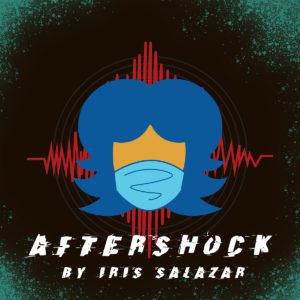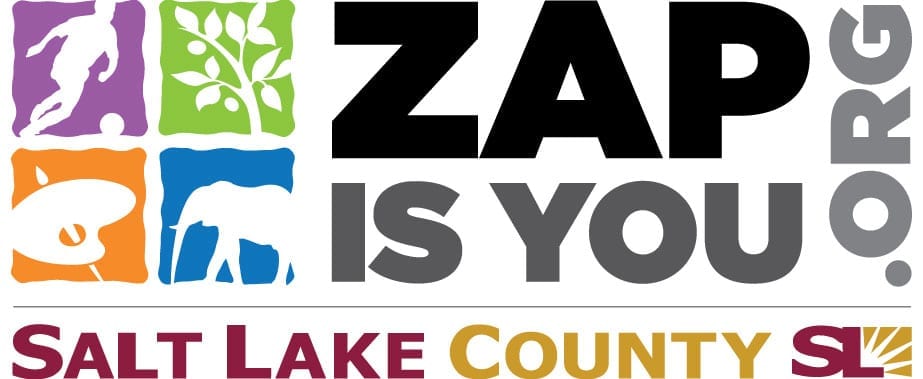SALT LAKE CITY — Plan-B Theatre’s premiere of Aftershock, a play written by up-and-coming writer Iris Salazar, is set in contemporary, post-earthquake, post-lockdown Salt Lake. But Aftershock is not a play about the COVID-19 pandemic.

In Aftershock, Teah, a 40-something-year-old Mexican woman, and faithful member of the Church of Jesus Christ of Latter-day Saints, is making her first visit to a therapist’s office. She reports to the receptionist that since the events of March 2020 she has been experiencing anxiety. As a teacher and a single woman, her otherwise stable life has now turned lonely. Her words come out in a panicked rush. She seems terrified that the forces just below her feet might suddenly swallow her whole. Ostensibly, she is seeking help so she can take control of her life.
However, the plot takes an immediate stylistic turn when she learns that her appointment has been co-opted as an audition for a match-making reality TV show. Or has it? Did she hit her head in an aftershock? Is this all a dream? Or is Teah truly so much a side-character in her own life that she will allow anyone and everyone around her to determine her next steps? The bad news is I am still not sure. The good news, such as it is, is that Teah agrees to audition for a chance to date a completely unknown bachelor, and the audience spends the next 70 minutes wandering through Teah’s own account of her life story. Along the way, an ensemble of friends, roommates, and strangers bounce in and out of her tale, while she seems to float, ever waiting for the next thing to happen to her. The production put me in mind of Samuel Beckett’s absurdist drama Happy Days, where a woman, eventually buried up to her neck, manages to push aside all concern for her hopeless situation by prattling endlessly about her happy life. I do not believe this comparison was intended.
In that she speaks from her experiences across the many contradictory identities that define her, Teah is like all of us. Her sometimes silly, sometimes painful memories should be relatable content, but Salazar’s script wanders through themes and reflections on contemporary issues while never landing on a thesis or a motive for the character. Teah talks and talks, but somehow never says what she wants. As a 44 year old, single, chubby, Mormon, Brown woman she lives both within and without the dominant cultures of the Salt Lake Valley. A more interesting version of this play might have shown Teah using the upheaval of the “pandemiquake” to examine her life choices, and in particular her commitment to the church that is dictating her actions and inactions.
At this point it is important for me to acknowledge that Salazar is Latinx, and she is telling the story of Teah, a Latina woman. Both speak from a particular viewpoint within the contemporary patriarchal, white-supremacist system that I am also a part of. I am a white woman, and I recognize the limitations of my ability to understand Teah’s experience as a Brown woman. (This rightful concern was brought to my attention on April 8th by the producing organization after the first publication of this review.) With those limitations in mind, I feel that the script has as much or more to say about Teah’s experiences as a single, larger bodied, Mormon woman than it does about her Latina identity. As I am a single woman of similar age and body shape who spent decades of my life devoted to the LDS church, Teah’s story might have been affirming or revealing, but instead I found my primary reaction was tedium. As the play moved toward its conclusion I resisted the urge to stand up and shout, “Do something!”
Director and sound designer Cheryl Ann Cluff has the actors moving in circles, around and around the stage, which is effective at keeping the 24 seat audience engaged. But this also reflects the aimless feeling of Teah’s life. Perhaps the only person on the production team who is fully clued into the existential crisis Teah could be reckoning with is the set designer. Janice Chan’s set is highly evocative. The edges of the stage are marked by glittering piles of broken glass, chandeliers, and caved in ceiling. Classical statues of women seem to be crumbling under the weight of too many jewels and the debris of a world falling down around them. At center is a sexy red chaise lounge, on which not a single sexy thing happens. The audience waits for the center of it all, Teah, to voice to some recognition of this reflection of her world, but it does not come.
The cast of six does a fine job of keeping the energy high, and working with the occasionally stilted language of the script. In the final 20 minutes my ear suddenly noticed an inexplicable aversion to contractions in the character’s dialogue. Estephani Cerros seems young for the leading role of Teah. She has some lovely moments when expressing memories both fond and difficult, but generally left me uninterested in the character (who, to be fair, just did not seem very interesting). Yolanda Stange as the therapist/game show host, Dr. Love Dearest, has a warm and comforting presence. When she encourages Teah to keep talking because she is “enthralled,” I believed her, and only wished I could relate. Liza Schoell’s expressiveness stands out in the small ensemble, especially in her frantic scene as Jenny, a broken-hearted roommate.
It is difficult to say how the cast and crew could have managed better in the shaky ground of Aftershock. Salazar’s script wants to go everywhere at once and yet goes nowhere at all. I suppose, by reflecting many people’s inner turmoil during these last few years, Aftershock is a pandemic play after all.
[box]The Plan-B Theatre production of Aftershock plays Thursdays through Saturdays at 8 PM, Saturdays at 4 PM, and Sundays at 2 PM through April 17 in the Studio Theatre at the Rose Wagner Performing Arts Center (138 West 300 South, Salt Lake City). Streaming performances are available April 13 through 17. Tickets are $10-25. For more information, visit planbtheatre.org.[/box]

